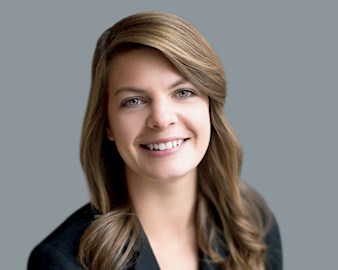
What’s it really like to solve real-world business problems as a brand manager? Grace Needleman, ’16, spearheaded a case competition with MillerCoors and the Kilts Center to help Booth students find out.
- By
- May 01, 2018
- Marketing

We had just 48 hours. None of us got much sleep. It was 2015, and I was part of a team of Booth students tasked with digging into Kraft consumer data to come up with an actionable solution to a real marketing problem—revitalizing its beloved Capri Sun juice drink. It was a crash course in real-life brand management. Participating in that Kilts Center Marketing Analytics Case Competition emerged as a standout experience for me at Booth.

I found this experience so valuable that I wanted to pay it forward after I graduated. When I heard Kilts was looking for new case competition sponsors, I rallied my fellow brand managers at MillerCoors to participate. People were at first a little wary and were unsure about what we would get out of it. Though the investment in terms of cost was minimal, this would require time from our CMO, our vice president of innovation, and other team members.
But I knew how to sell this—especially because I had been a participant myself. Even though I had never organized anything like this before, I was confident the partnership would be equally valuable to Booth students and MillerCoors. Students would get a crack at exploring real data-driven marketing. For MillerCoors, it would be a recruiting opportunity as well as a way to bring fresh ideas to a difficult marketing problem. It turns out we had a pretty big one: we had to figure out how to market a new beer brand to an audience that’s trending toward wine and spirits.
MillerCoors was about to launch Two Hats, a light and affordable beer with a hint of fruit flavor. It was created specifically with the 21- to 24-year-old consumer in mind to provide an approachable point of entry into beer. This audience has been drinking less beer than previous generations did at their age. It’s particularly challenging to market to these consumers because they absorb media in a completely different way. TV ads don’t reach them. Their sense of reality and perspective is far different than anything we’ve seen before. But I had a sense that Booth students were up to the challenge.
“Everyone at MillerCoors was impressed with the results.”
Over 100 students applied, and we selected eight teams to participate. We invited them to the MillerCoors headquarters in downtown Chicago during the Autumn Quarter for a product tasting and kickoff. We gave them a download about the brand, the data, and the consumers. We challenged them to come up with marketing strategies for this hard-to-reach audience. After that, they had a week to pore over the data and prepare their pitches.
Everyone at MillerCoors was impressed with the results. It was enlightening and encouraging to see several teams propose similar solutions, ones that weren’t originally on the radar for the Two Hats brand team.
Almost every team incorporated Snapchat in some capacity. The students got creative in how to use filters and geotargeting on the platform to reach 21- to 24-year-olds. Teams also explored new flavors, pricing, and packaging in their presentations, critical pieces to the marketing puzzle. The Two Hats brand team gathered valuable information on the 21- to 24-year-old consumer from the Booth teams, which they were able to use when developing marketing communications.
Reviewing case studies in the classroom helps you learn how other companies succeeded through the smart application of data, but there’s no better way to learn how to tell a story with data than by doing it yourself. Participating in a case competition as a student was valuable for my own education, and it also inspired me to bring this experience to a wider network of students. There’s no better way to put data-based marketing into practice than diving in and doing it.

Teaching English in rural China inspired Frances Deram, ’22 (AXP-21), to join an education startup for vulnerable communities—and Booth gave her what she needed to scale.
A Quest to Improve Rural Education in China
A casual ski trip among friends has grown into a decades-long tradition for one Booth class, full of bonding on and off the slopes.
Living the High Life
Susan Kane, ’91, was determined to make a difference when she joined the nonprofit Blessings in a Backpack.
Filling a Critical Gap for Children in Need